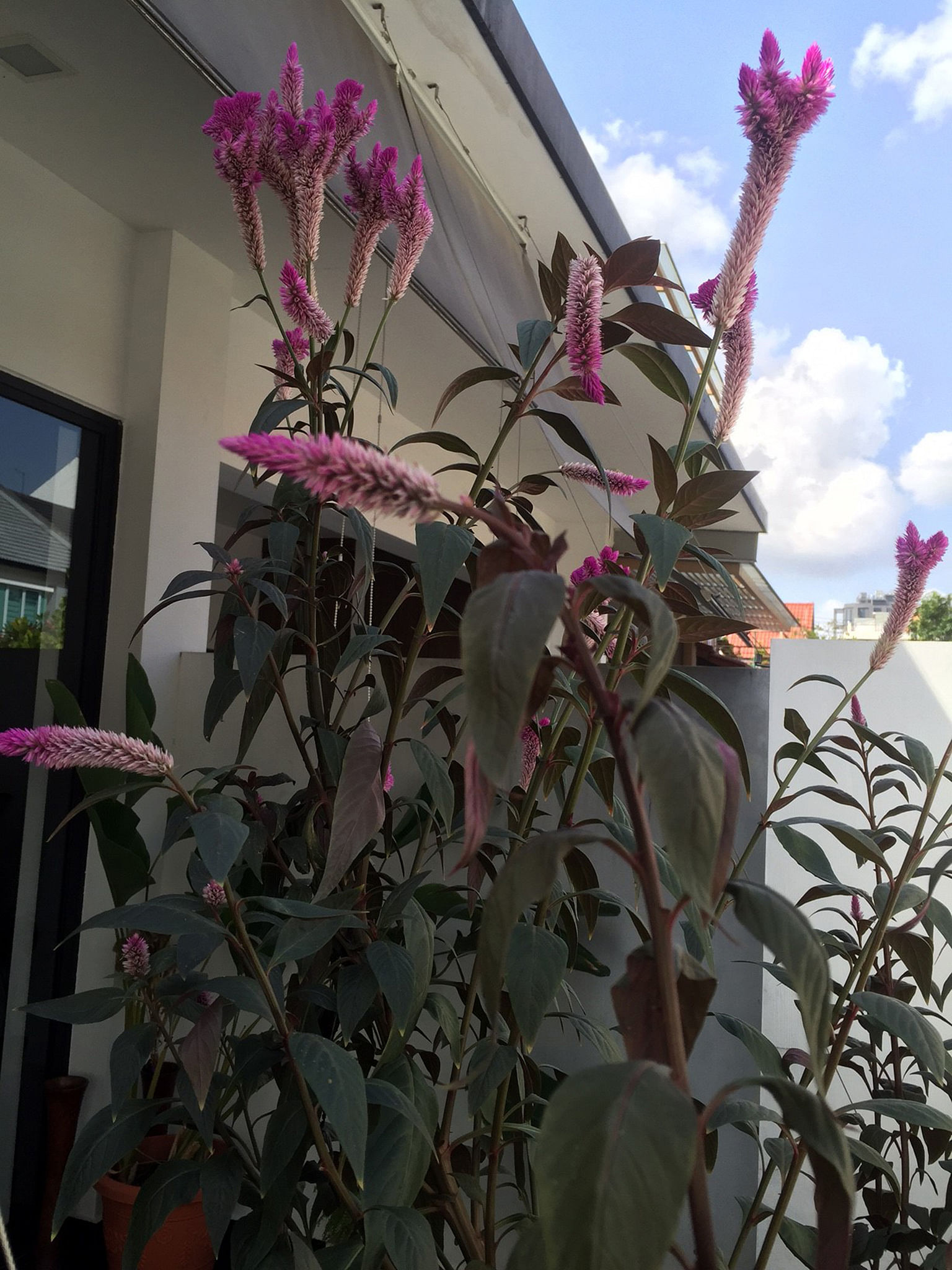Mistletoe a parasitic plant
I saw this tree in front of my block. It looks like a willow tree. However, one branch has a different type of leaf, unlike the drooping leaf associated with willow trees. What is it?
Daniel Tay
The plant which has different leaves from the willow tree is a mistletoe. It is a parasitic plant that is likely to have grown from a seed dispersed by a bird.
The exact species of the mistletoe can be ascertained only with pictures of its young leaves and flowers.

A common mistletoe found on Singapore trees is the Common Malayan Mistletoe (its botanical name is Dendrophthoe pentandra) and its leaves are food for caterpillars of the Painted Jezebel butterfly.
Mistletoes have an ecological role in Singapore's biodiversity so some people leave these parasitic plants on their trees. They are removed when they have grown too large and compromise the health and vigour of the host tree.
Tip: Golden Plume good choice for garden borders
The Golden Plume (its botanical name is Schaueria flavicoma) is a shrub with interesting flowers. Its long-lasting inflorescences look like a golden brush with yellow filamentous bracts.
The actual flowers of the plant - are white, but are often overlooked as they are small and have a short lifespan.
The shrub can be grown as a border for a garden to add colour.
It grows best in a sunny location with direct sunlight. Soil should be rich in organic matter, moisture- retentive, fertile and well-drained.
The plant is easily propagated from stem cuttings and should be pruned periodically to encourage a bushy growth habit.



Eat plants with caution
I was given these plants and was told their leaves are edible. What are they and can they be eaten?
Chan Chiu North
The plant at the top is the Common Rue plant, which is botanically known as Ruta graveolens. The leaves have a distinctive odour. They are sometimes added to green bean soup and have medicinal uses. However, pregnant women should be cautious - it has abortifacient effects.
The plant in the middle looks like the seedlings of the chilli plant (botanical name is Capsicum annuum).
The last plant is the Scrambling Gynura. Its botanical name is Gynura procumbens. In Singapore, it is known by its Chinese name, Jian Feng Wei, which literally translates into "Pointed Phoenix Tail". Its leaves are eaten raw and said to be able to reduce one's blood pressure and treat diabetes.

Spider mites the cause of white spots
How do I save my plant? It had lush green leaves, but they are now infested with insects that cause white spots (above). I tried to spray it with lemongrass solution daily, but it did not work. Although the plant is still producing new branches, the leaves continue to fall.
Gretchen Chang
The plant is the Butterfly Pea. It is commonly known as Bunga Telang and Blue Pea and its botanical name is Clitoria ternatea.
The damage is caused by spider mites, which suck sap from your plant. They are a common pest and not easily dealt with.
Infestation tends to become severe if there is low humidity and the area is windy.
The lemongrass spray is likely not effective. You may want to use neem oil or summer oil - they will smother the spider mites.
Use a smaller dose of oil than what is recommended on the label. Apply when the weather is cool - the best time would be early morning or late in the evening.
Apply the oil several times to ensure current and subsequent pest populations are wiped out. Make sure the pesticide is sprayed on all parts of the plant, including the underside of leaves.

Wild Cockscomb needs plenty of water to thrive
What is this plant? I grew it from seeds for its flowers. The leaves on one of the shrubs wilted in the afternoon, but became normal again at night.
Goh Fan Ling
It is the red-leafed version of the Celosia argentea (Spicata Group) and commonly known as Wild Cockscomb.
It is a thirsty plant. If grown in a pot, its roots may have filled the soil volume and the water in the soil could be quickly exhausted on a hot day. This would cause its leaves to wilt in the afternoon.
You may want to move the plant to a larger pot or grow it in the ground. Ensure it is hydrated thoroughly.
Consider watering the plant twice a day - in the morning and in the evening.
Placing the pot in a shallow water reservoir may help, but make sure to prevent mosquito breeding.
• Answers by Dr Wilson Wong, a certified practising horticulturist and founder of Green Culture Singapore (www.greenculturesg.com). He is also an NParks-certified park manager.
• Have a gardening query? E-mail it with clear, high-resolution pictures of at least 1MB, if any, and your full name to stlife@sph.com.sg

